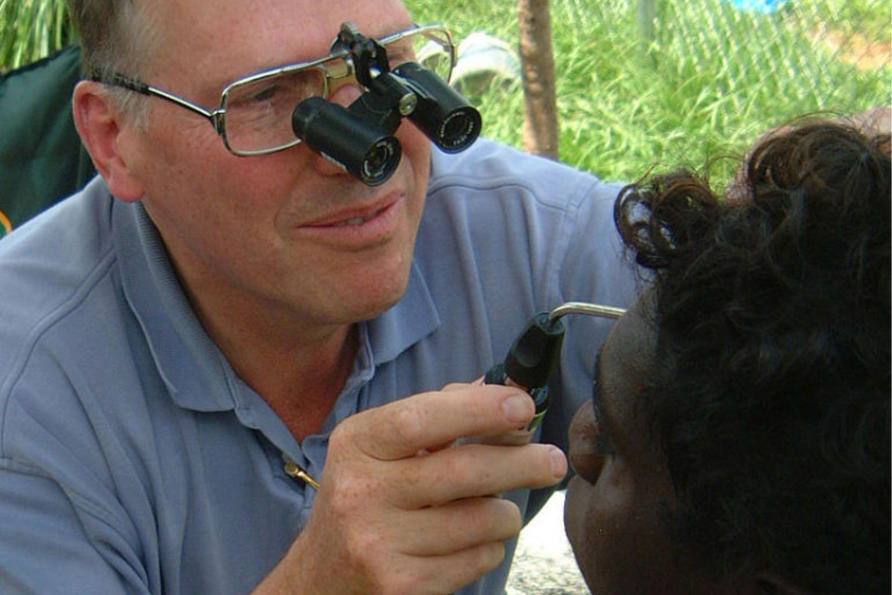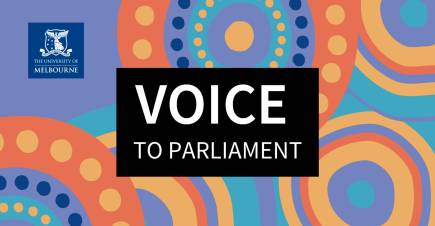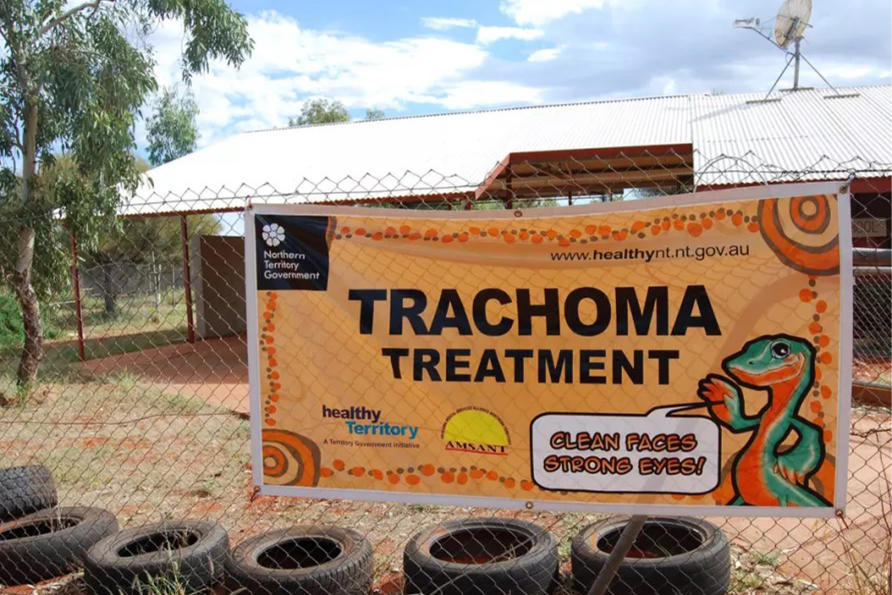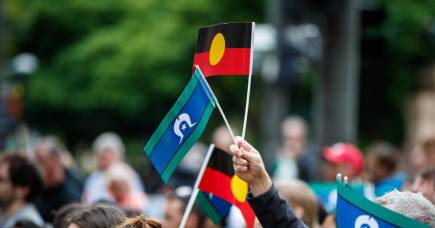I grew up in middle-class Melbourne, went to a private school and graduated in medicine at the University of Melbourne. At the end of the first year, four old school friends aimed to drive around Australia.
We were delayed in Broome and came back via Kalgoorlie and Alice Springs. Seeing outback Aboriginal people and communities really opened our young and inexperienced eyes.
At the end of my training as an ophthalmologist, I spent a year or so as the Assistant Director of the National Trachoma and Eye Health Program led by Professor Fred Hollows. During this time, our teams examined over 80,000 Aboriginal and Torres Straits Islander people in some 400 communities.

This was a life-changing experience for me. We met and worked with some wonderful, strong people across the country, but their living conditions were unbelievably poor. (Later I did some work in refugee camps where the conditions were not nearly as bad as in these communities.)
The Program found trachoma to be a major problem, and the rate of blindness in Indigenous Australians was 10 times higher than in non-Indigenous Australians.
I spent some time in the USA and worked on eye health in a number of African and Latin American countries. In 1990 I returned to the University of Melbourne as the Professor of Ophthalmology.

Indigenous Voice to Parliament | The University of Melbourne
Read more
Alongside other clinical and academic responsibilities, my team and I did further work in Indigenous communities. In 1997 I reviewed the status of Indigenous Eye Health for the Commonwealth, but unfortunately not much changed after that.
However, in 2008 I started the Indigenous Eye Health Unit in the Melbourne School of Population and Global Health. The aim was to end avoidable blindness and vision loss and close the gap for vision.
We embarked on a series of community-based consultations and fact-finding to identify the problems and the potential solutions. Surprisingly we found that the unmet need for eye care in Aboriginal and Torres Strait Islander people was the same in the cities as it was in the most remote areas.
The pathway of care – or the patient journey – was complicated. It was like a leaky pipe with many cracks and gaps where people would fall out of the system. Working closely with communities and leaders we came up with the Roadmap to Close the Gap for Vision. It was launched in 2012 by Justin Mohamed, Chair of NACCHO (the National Aboriginal Community Controlled Health Organisation) and the Minister for Indigenous Health, Warren Snowdon.
The roadmap had 42 recommendations for things that had to be fixed; if you only fixed two or three things the pipe would still be leaky!

We worked together with communities to develop local regional areas to coordinate and provide eye care. There are 64 of these regional groups that cover the whole country; two-thirds are Indigenous-led. They include the local Aboriginal Community Controlled Health Organisations (ACCHOs), hospitals and eye care providers. Each group maps out the eye care services they need, visits the service providers and monitors their ongoing provision.
All this has been developed and coordinated at the jurisdictional level with the strong involvement of the NACCHO state affiliates. We have also worked extensively with communities to develop health promotion material for education about trachoma, facial cleanliness and good hygiene, screening for diabetes and the promotion of regular eye exams.
Overall, our work has achieved real improvements in eye care provision that are now reported each year by the Australian Institute of Health and Welfare. The gap for blindness has been halved and the rates of eye exams or cataract surgery increased three-fold.

Don’t twist the aim of The Voice for political gain
Read more
This success involved many people, but it would have been impossible without strong Indigenous community advice, support and leadership. An independent review of this work highlighted the importance of allyship, the need for cultural safety, and the development, strengthening and support of Indigenous leadership.
This showed the importance of putting Indigenous eye health into Indigenous hands.
The value of community consultation and leadership was so clearly shown by NACCHO and the ACCHOs with their fabulous work done during COVID. We have to listen to and support Indigenous communities and leadership. That is why The Voice is so important.
It is clear that decisions for First Nations People need to be made “WITH them, not FOR them”.
There have been at least six Aboriginal and Torres Strait Island consultative groups set up by the Federal Government since 1973. Each time they were disbanded and not replaced when the current Prime Minister did not like what they were saying or doing.

The Referendum for The Voice says that there has to be a permanent consultative mechanism, a Voice. First Nations people should have the opportunity to provide commentary and advice on matters that affect them
The ask for more detail about the Referendum and The Voice is entirely spurious. The Referendum says there must be a consultative body, The Voice. The structure and all the details are then up to the Parliament to legislate.
There is a draft proposal for this structure and legislation that was drawn up after extensive community consultation. This was initiated by Professor Tom Calma and my colleague Professor Marcia Langton under the Morrison government and their Minister for Indigenous Affairs, Ken Wyatt.

True reconciliation or just history repeating?
Read more
It is simple. When the Referendum is passed, Parliament will need to debate and approve the structure. If in time it needs to be altered, Parliament can do that, but there will always have to be a Voice.
That is the whole point of the Referendum, there has to be a permanent body.
Of course, The Voice is only the first step. Makarrata with Treaty and Truth Telling will need to follow as is set out so eloquently in the Uluru Statement from the Heart.
Banner: Getty Images
